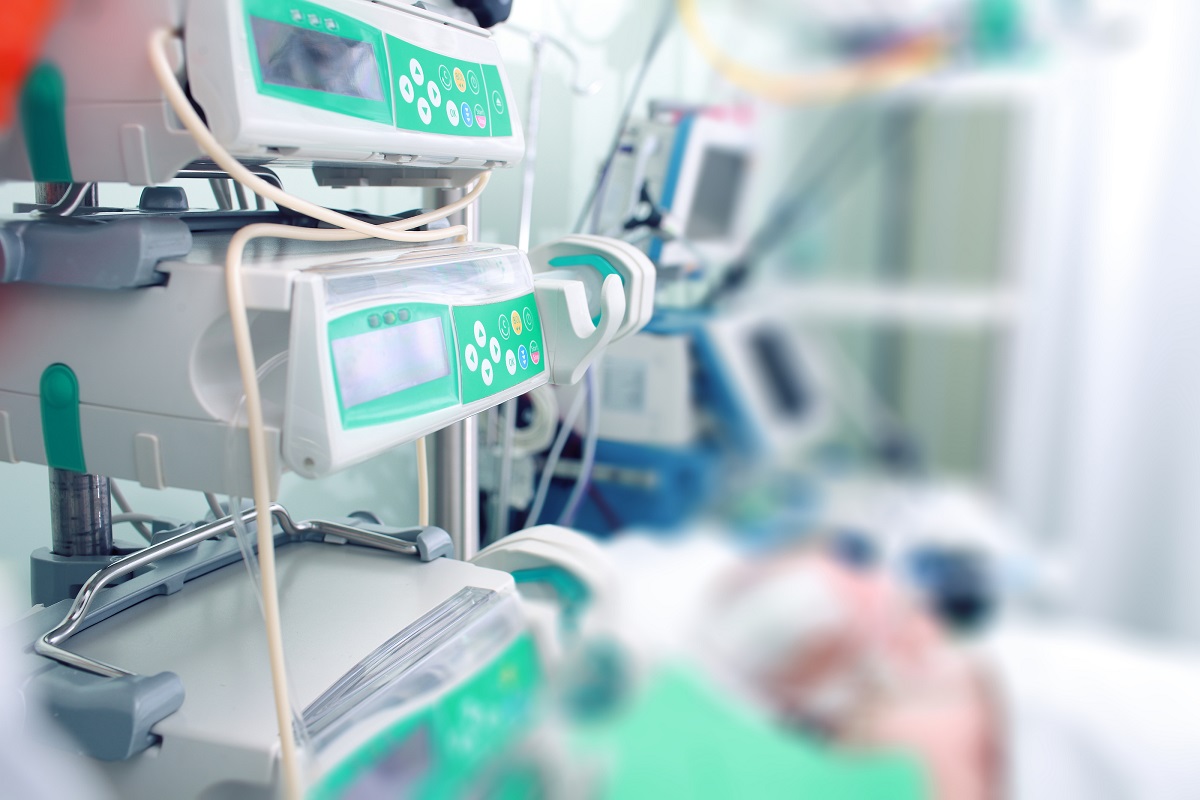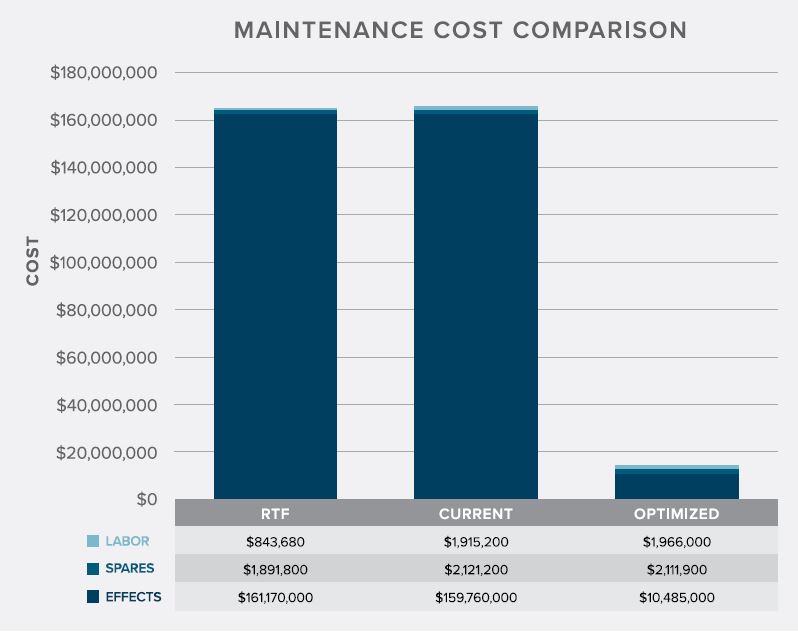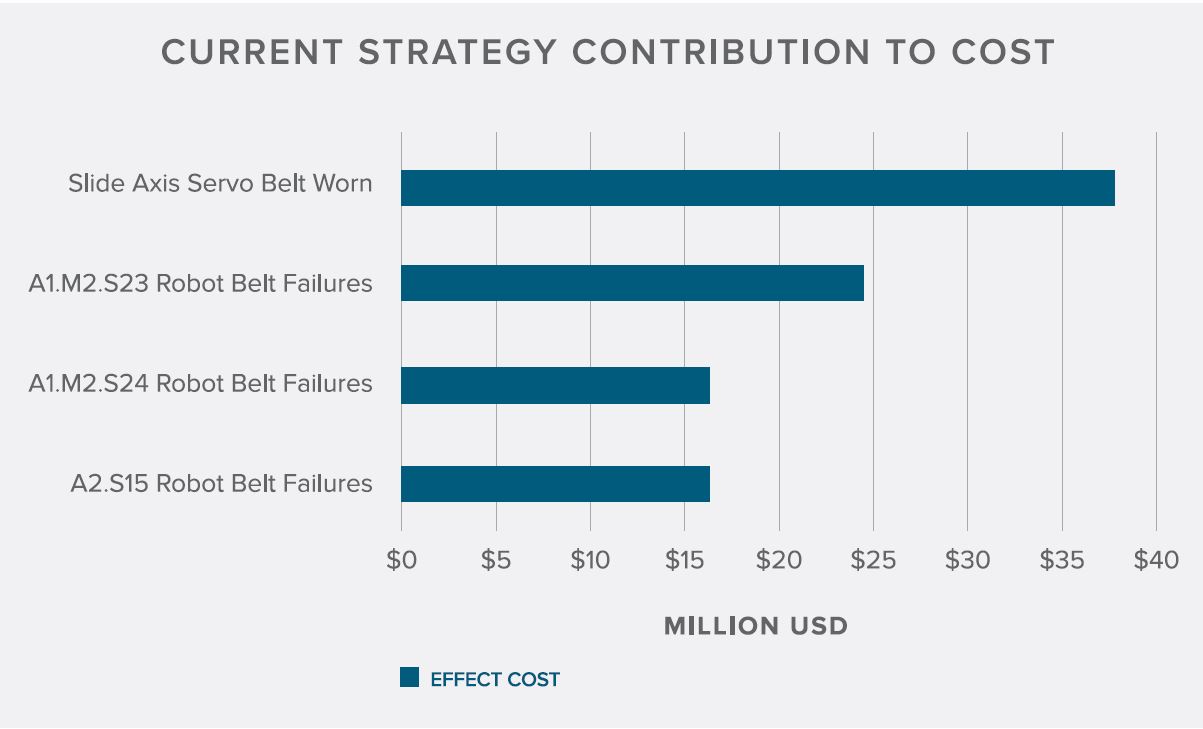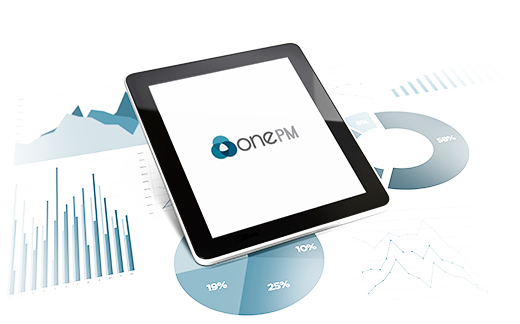
Operations and maintenance personnel unite to improve efficiency and reliability using ARMS Reliability's Cordant™ Asset Strategy® process to leverage improvements worldwide.
The medical device manufacturer uncovered $150 million in cost-savings over 10 years for a single machine at a single facility.
The Problem
Our client, a global medical and pharmaceutical device company, had an important, intricate manufacturing machine they suspected was underperforming - it was frequently down, causing decreased production and increasing emergency and corrective labor costs. With many of these same machines operating at facilities around the world, the company needed to know why they were often unavailable, and the best way to improve their performance.
The medical device company called on ARMS Reliability to assess the problem and offer maintenance-strategy solutions. Working together as partners with company team members at a single site, we conducted a Reliability Centered Maintenance [RCM] study on the machine, optimizing maintenance activities and frequencies for performance improvement.
The Solution
ARMS Reliability was charged with completing a study to risk-optimize the maintenance strategies for 40 asset types at this location; we ultimately completed multiple asset types within 53 machine stations, as well as another 32 shared assets.
The company gathered a cross-functional team comprised of maintenance, reliability, and operations team members, as well as personnel from other sites globally who use the same type of machine. This panel of more than 20 experts provided their combined knowledge throughout the study, and afterward, offsite team members were able to deliver the improvement recommendations and strategies to their home facilities - realizing multiplied cost savings for the company.
We began by gathering failure and maintenance information for the machine from a variety of sources, including key site personnel, machine operations and maintenance documentation, site drawings, and SAP. We also held a series of in-person, onsite facilitation sessions to collect remaining data.
Once all gathered information was validated, ARMS modeled various maintenance scenarios, comparing different strategies, spares, and holding options, and generating budget predictions over a ten-year period. We also used our OnePM® software to build the machine using an equipment class library format, and to produce formatted SAP load sheets for the client. The use of OnePM® lets the company implement the study results at all locations worldwide that use the same machine and ensures the result format is loaded to SAP. The models, which were completed using the RCMCost™ module of Isograph's Availability Workbench™, simulated three scenarios:
- Run To Failure [RTF] - a worst-case scenario showing the impact of eliminating preventive maintenance and inspection tasks entirely;
- Current Maintenance - shows the effectiveness of the company's existing planned maintenance strategy for the machine; and
- Optimized Maintenance - shows what will happen with optimal tasks performed at optimal frequencies.
A "bonus" benefit of the study was how our team-based approach brought together not only maintenance and reliability personnel, but also site operations, directors, and management, to discuss issues with the machine. Reliability and maintenance professionals are typically the main drivers and beneficiaries of an RCM study; with the involvement of operations professionals, the process became a platform for communication, new awareness, and understanding between these groups - and helped propel the company toward a world-class reliability program via plant-wide buy-in.
As Figure 1 illustrates, the ARMS Reliability maintenance cost comparison shows that optimized maintenance can potentially save the company almost $150 million - or more than 91% cost savings - over a ten-year timeframe.
But how?
- Changing maintenance activities to redirect the workforce toward tasks that are valuable to the company, and away from wasted efforts;
- Stocking low-cost, long-lead-time spares to dramatically decrease machine downtime; and
- Training operators wherever recurring incidents delay start-ups and produce machine trips

For example, the RCM study found that the machine's top 20 contributors to maintenance-strategy costs are belt failures. Currently, the belts are inspected monthly, but the failure mechanism has a 24-hour warning time, so the monthly check-ups are almost never effective.
Additionally, the belts aren't stocked onsite, and take three weeks to procure. As is evident in Figure 2, the machine downtime associated with these belt failures was costing the company millions.

Our recommended solution consisted of two relatively simple steps:
- Catch belt failures just before they happen by turning monthly inspections into a daily task; and
- Eliminate the wait-time for spares by always stocking extra belts.
The company can expect a $41,500 [1.03%] bump up in direct maintenance costs over the decade period, but the indirect savings via reduced downtime and corrective-labor costs far outweigh such a minimal investment.
The Outcome
Phenomenal Savings
ARMS Reliability's RCM study provided our client with a quantified new maintenance strategy expected to save this single facility more than $15 million a year for ten years - a 91% cost savings over the current strategy. The new optimized maintenance strategy will also reduce machine downtime, labor allocation, and idle time.
Improved Teamwork
Our team-based approach meant bringing company operations, directors, and management to the table along with reliability and maintenance professionals. This inclusive practice facilitated free-flowing communication, illuminated new blind spots, and helped personnel begin to think of themselves as reliability implementers.
Global Application
We also invited key team members from other company sites around the world that have the same machine in their plants to collectively participate in using the same approach to improve their own maintenance strategies. Not only can the pilot site use the same model to identify other opportunities for performance improvement, but other global locations can leverage this data and these results to improve performance at their own facilities - potentially multiplying the benefits of this maintenance-strategy optimization many times over company-wide.

Discover OnePM®
OnePM supports the process of Asset Strategy Management to deliver the optimal balance of cost, risk, and performance - continuously. Learn how.
Learn more Contact Us
